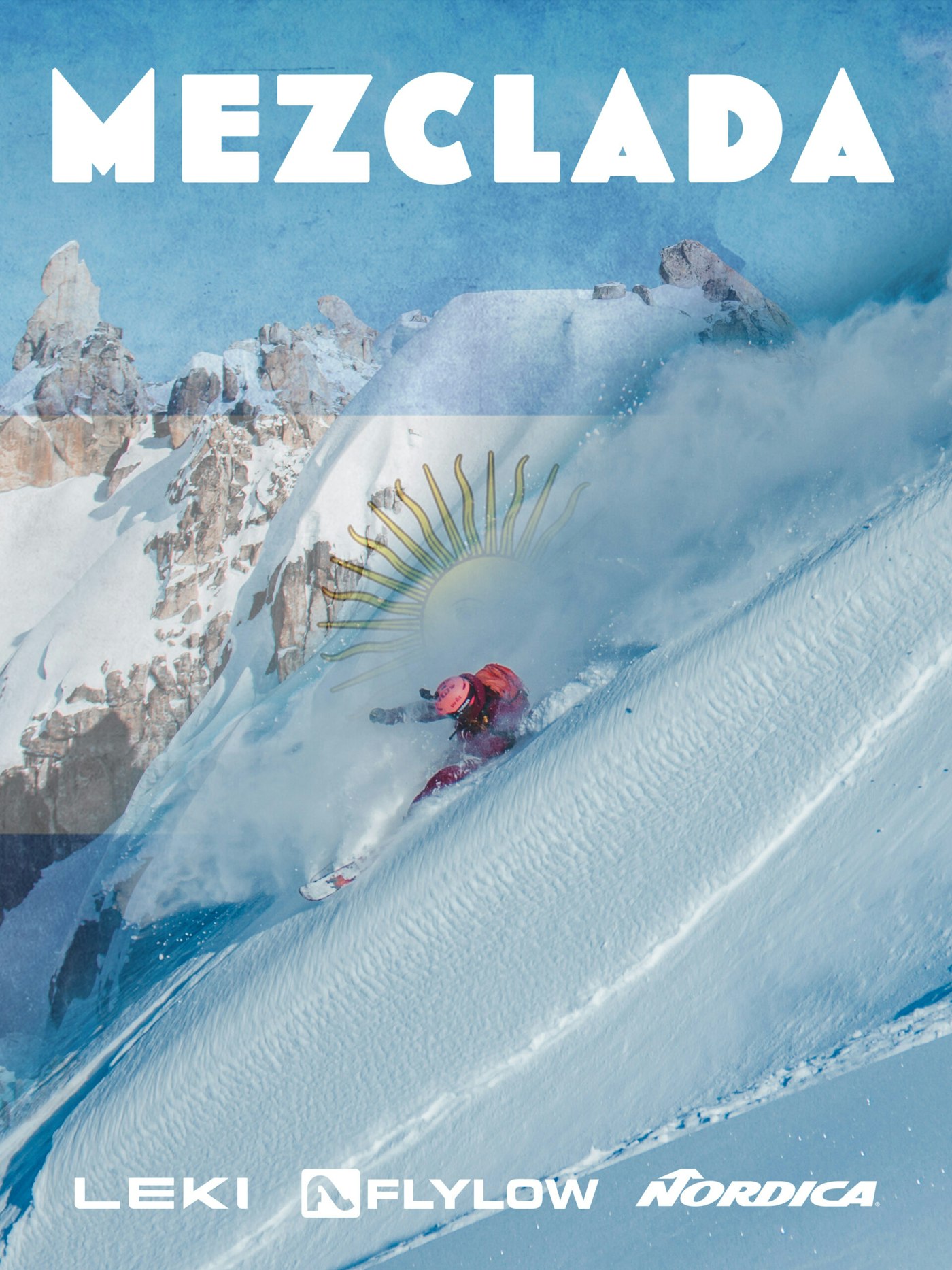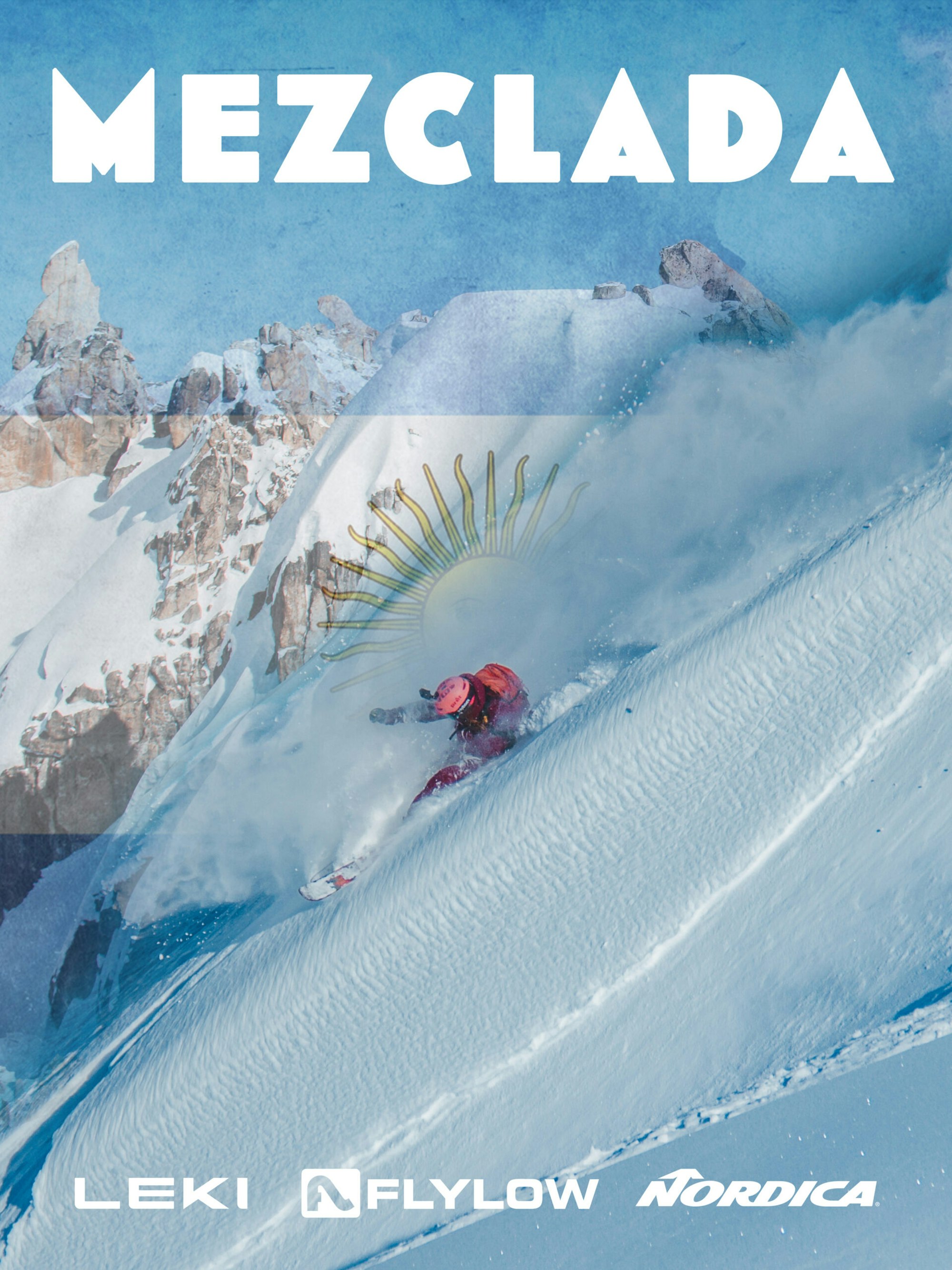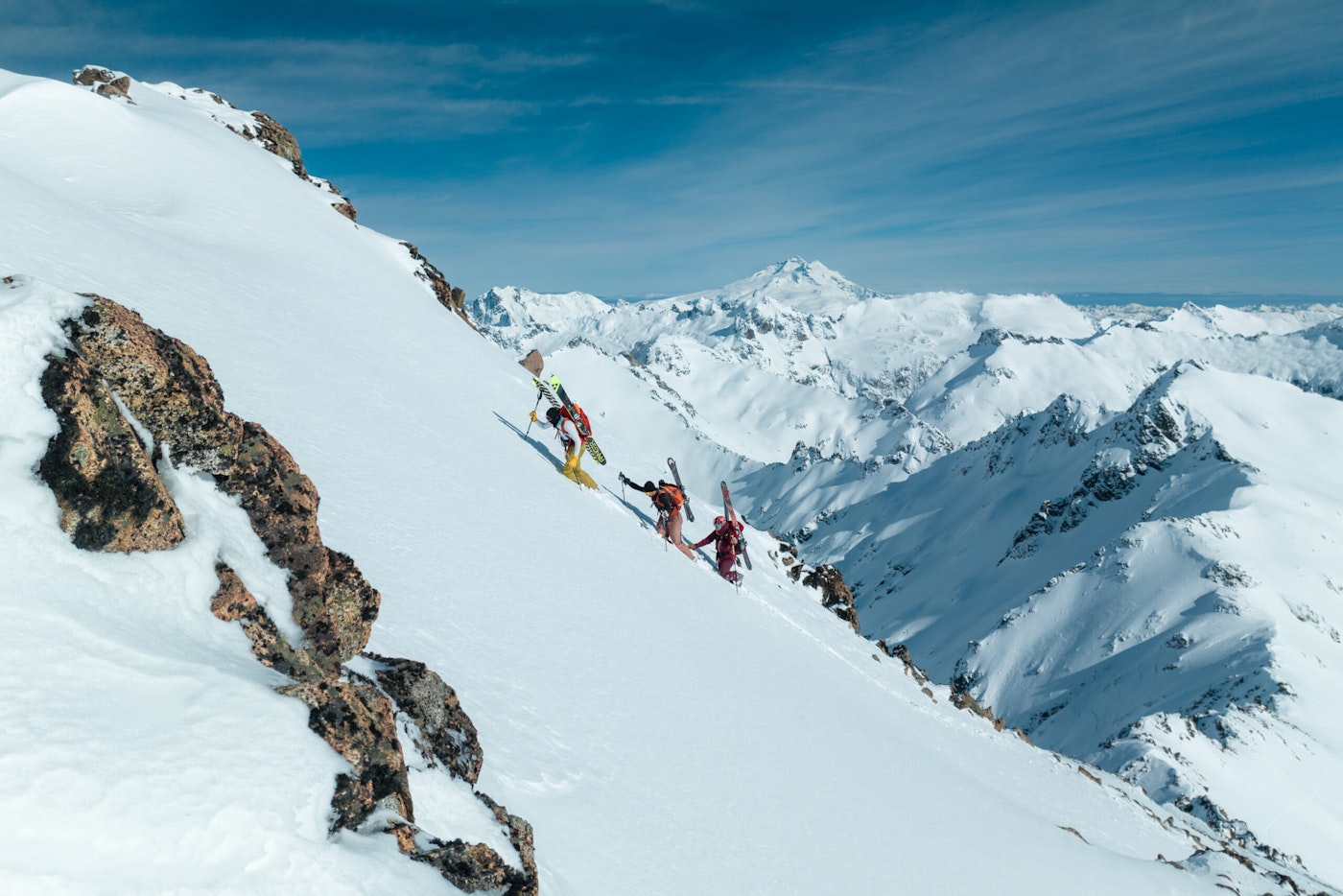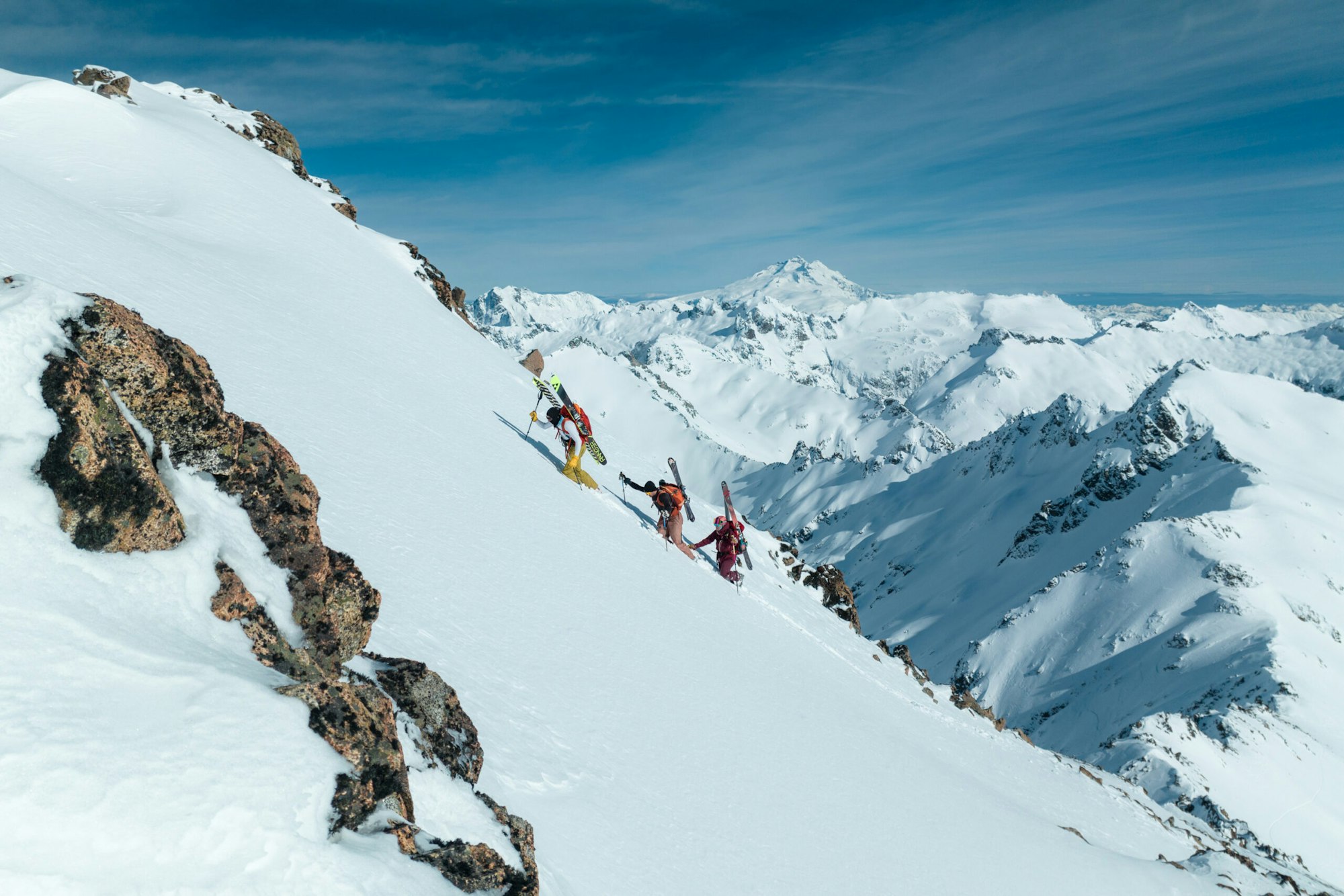Featured Image: Karlos Jeri
There is no one right way to create and produce a ski film. Some films focus entirely on the skiing, while others lean on a storyline to carry through the epic ski shots. For Tami Razinger’s first film, the Jackson-based athlete decided to dive deep and explore her relationship with skiing, her family in Argentina and how the cultures of both worlds combined to create Razinger’s unique life story in “Mezclada.” Translated to English, mezclada means mix—the perfect word to describe Razinger’s self-identity.
In anticipation of the world premiere of “Mezclada” at Highpoint Cider in Victor, Idaho, we caught up with the professional skier to chat about the filmmaking process as well as what to expect at the premiere on Saturday, January 13. Along with premiering “Mezclada,” Razinger has invited other Teton locals and athletes to show their films as well as live music, street food and a gear raffle capped off with an afterparty at Wildlife Brewing. Doors open at Highpoint Cider at 5 p.m., films start showing at 6 p.m. and the after-party begins at 10 p.m. Keep reading for the full Q&A below, and we’ll see you at the show!


POSTER ART: Christian Johansen | POSTER PHOTO: Goran Magister
First off, how are you? How has your season been so far this year?
It’s definitely been a slow start, as it has been everywhere, but it’s been good to take time to slow down and have the time to work on this film project and premiere. Thankfully, we just got some snow, and it’s going to be snowing more this week, so I’m excited to get out there and get back at it!
You’re hosting a premiere of your new film”Mezclada” this Saturday at Highpoint Cider in Victor, Idaho. Can you tell us more about your film and what we can expect at your premiere?
My film explores the themes of identity and culture and also just embracing one’s roots and the transformative power of that. I wanted to make more of an unconventional ski film while also being genuine to my story. It melds a ski film with a documentary and goes through my life, both my skiing history and reconnecting with my whole family in Argentina.
I’m really excited [about this premiere]. I didn’t want it to be completely about me, I wanted it to be about my community. So I decided to host a premiere on the Teton Valley side, I feel like they don’t get as many premieres as the Jackson side does, and I thought it was a really great opportunity to host a few films that have been released this early season. A lot of them are close friends of mine, I curated a list of films with variety—women in films but also my roommate made a film, and the young guns in this town, the Gentry Boys, made a film—so a lot of the hometown crowd and local athletes, showcasing that.
What inspired the creation of “Mezclada”?
It’s a story I’ve been wanting to tell for years. Essentially, when my path in skiing was diverting away from the freeride competition scene, I wanted to get into filming and get into films in general, but at the same time, I wanted to make my own film and make it genuine to me and my story, and this is the one I’ve always wanted to do. Even if it wasn’t the craziest story, I knew if I put together skiing and a place a lot of people have never been, I knew it would grab a lot of people’s attention. It’s been a lot of years in my mind but just a year in the literal making.
Producing, directing, human wrangling. What was the hardest part about creating your new film?
I would say balancing all of the roles—being the creator of the film but also starring in the film is a lot. I would also say finding the funding for it, which I never fully found, was a dead-end process in a lot of ways. It was hard to get funding from brands when I didn’t have anything (past projects) to show for my work—I had sponsors pitch in a little bit, but it was definitely lower than the budget I was looking at. I had to count pennies in a way and just make things work. It opened my eyes to a lot of pieces of the puzzle that I didn’t quite understand before, and now I’m realizing how it all works and how it all functions…unfortunately, it functions with a lot of money, which most people don’t have [laughs].


PHOTO: Marko Magister
Any unexpected hurdles you had to get through?
Planning a trip to Argentina is not something I haven’t done before, of course. My family lives there, and I try to visit every few years. It’s something I know how to do, I’ve done it before, I have family to stay with, but flying two other people down there with me, who were people I had never met in person before, definitely added another variable of figuring out travel logistics and a detailed itinerary. We talked about equipment and itinerary—how many days we’d be there and where—what we’d be doing, what we’re trying to shoot, the storyline and what we’d need so that when we got back, we could make the film happen. We only had nine days with the two filmers. My trip was three weeks there to spend time with family after, but I only had nine days to film and the weather is hit or miss. The weather is definitely a huge variable, it could be dry, it could be raining, it’s kind of like the Pacific Northwest down there, and it’s not very cold, but when you hit it right, everything can line up perfectly, but the chances of that are slim in a short period of time [laughs].
So did you end up nailing the weather window?
As most people do, we were looking at the weather meticulously before we headed down there, and it was warm and no snow but then it thankfully started to turn on just before we got there. We hit it pretty well, but to be honest, my best ski day was after the filmers left. But for the most part, there were still some days that were pretty good. It’s not like West Coast weather where you get days of sun after a big storm, Patagonia is a bit of a bubble and can feel like you’re skiing in a ping-pong ball, so we definitely battled with low visibility.
With whom do you think “Mezclada” will resonate most?
I think there’s a little bit for everyone. I tried to make it less of a ski film thing and more of an identity crisis thing, and I think everybody in some way or another has experienced that to some level. For me, since all of my relatives are still in Argentina and it was just my parents who moved us to the United States, that’s where my family is, and that feels like home, but this is where we made our home in the U.S., so it’s this question of “Where is home?” because neither place really feels that way. It’s feeling a little lost, and I think everyone has felt that way in some way or another, whether it’s because of skiing or your family or anything like that.
If you go back to Argentina, what is one thing you want to make sure you don’t miss? Whether that’s skiing a certain line, eating a certain meal, etc.
Planning these trips to Argentina always has a mixture of everything. The one thing I always make sure to do is spend as much time with my family as I can because I don’t know when I will get that time again. So, on one hand, it’s spending more time with my family and making the most of those moments together, but in terms of skiing, we ended up hitting a backcountry zone right off of the resort. They call the zone Mini AK, and it’s super consequential terrain, so I would love to ski in that zone more with low avy danger. And I would love to go back to the huts we visited, specifically Refugio Frey, but spending more time at each hut, slowing down and not feeling as rushed.
Who does après better? North Americans or South Americans?
Definitely South Americans [laughs], that’s no question. Except their partying isn’t so much après but discos that go from midnight to six in the morning. Those guys don’t sleep!
What does the perfect ski day look like to you?
The perfect ski day is just being with a group of people who you trust and love in the mountains. It doesn’t necessarily have to be perfect snow or perfect weather, but you’re with the people you love the most, and you’re enjoying each other’s company, you feel safe and everything feels like it’s come together easily.
![[Q&A] Tami Razinger Mixes Things up With New Film "Mezclada"](https://www.datocms-assets.com/163516/1751463174-40karlosjerimedia_mezclada_branding_3-scaled.jpg?auto=format&bg=FFFFFF&w=100)
![[Q&A] Tami Razinger Mixes Things up With New Film "Mezclada"](https://www.datocms-assets.com/163516/1751463174-40karlosjerimedia_mezclada_branding_3-scaled.jpg?auto=format&bg=FFFFFF&w=1200)

![[GIVEAWAY] Win a Head-to-Toe Ski Setup from IFSA](https://www.datocms-assets.com/163516/1765920344-ifsa.jpg?w=200&h=200&fit=crop)
![[GIVEAWAY] Win a Legendary Ski Trip with Icelantic's Road to the Rocks](https://www.datocms-assets.com/163516/1765233064-r2r26_freeskier_leaderboard1.jpg?w=200&h=200&fit=crop)

![[GIVEAWAY] Win a Legendary Ski Trip with Icelantic's Road to the Rocks](https://www.datocms-assets.com/163516/1765233064-r2r26_freeskier_leaderboard1.jpg?auto=format&w=400&h=300&fit=crop&crop=faces,entropy)




![[GIVEAWAY] Win a Head-to-Toe Ski Setup from IFSA](https://www.datocms-assets.com/163516/1765920344-ifsa.jpg?auto=format&w=400&h=300&fit=crop&crop=faces,entropy)


![[Q&A] Tami Razinger Mixes Things up With New Film "Mezclada"](https://www.datocms-assets.com/163516/1751463174-40karlosjerimedia_mezclada_branding_3-scaled.jpg?auto=format&bg=FFFFFF&w=2000)